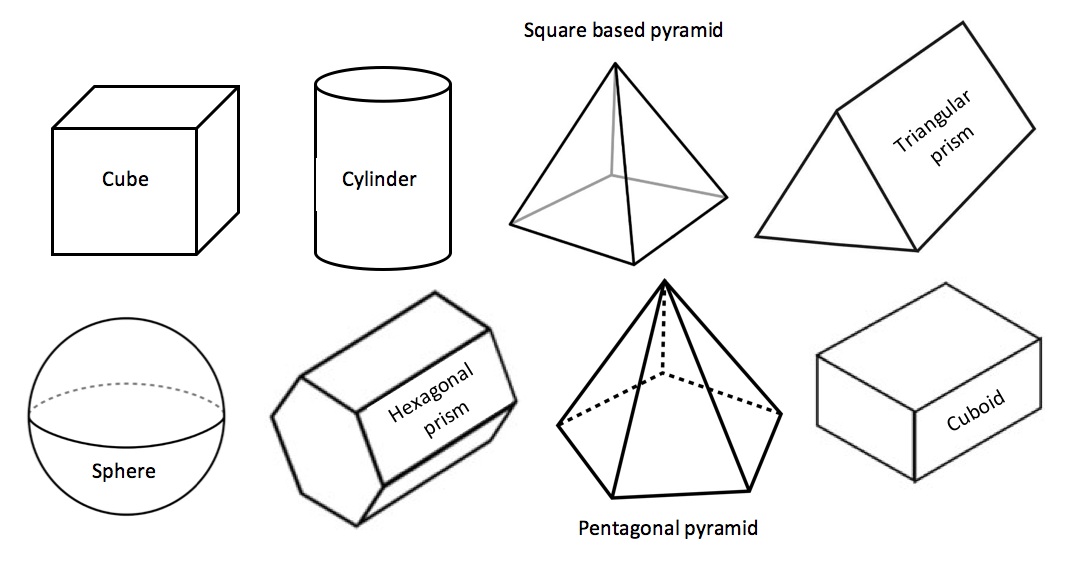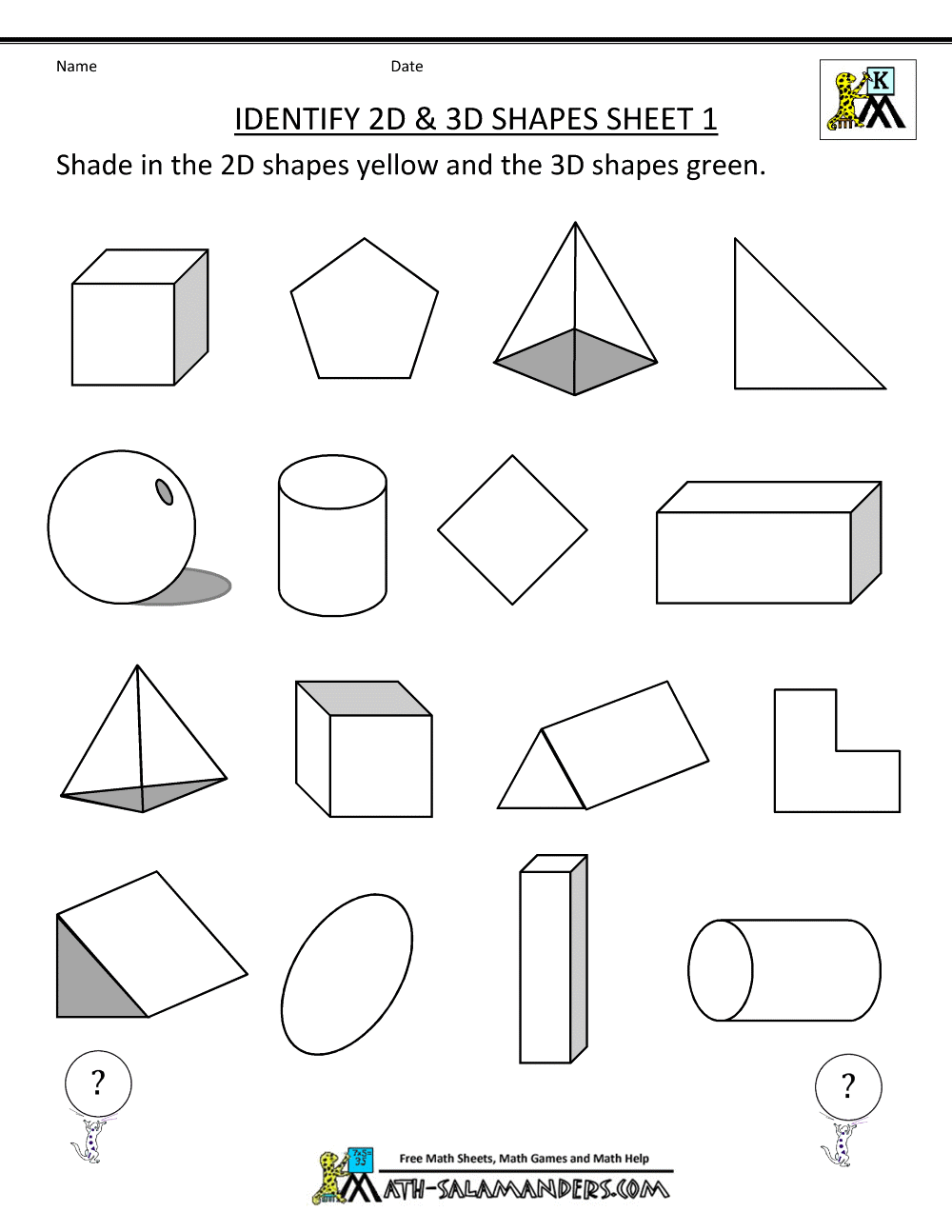

Some 2D shapes have the same number of sides and corners but have different names. The only 2D shape that does not have corners is a circle – it just has one continuous side. We describe the outline of a shape between two corners as a side. The other key properties of 2D shapes are ‘sides’ and ‘corners’. We’ve already talked about how 2D shapes have height and width.

For example, we could consider a triangular-based pyramid, a square-based pyramid, and a triangular prism as all different ways of drawing a ‘3D triangle’. Other 2D shapes can be made 3D in multiple ways. However, we could also describe a cylinder as a ‘circle with depth’. We could say that a sphere is a circle that has depth. Other shapes can be a bit more complicated. For example, the difference between a square and a cube is a square only has height and width, whereas a cube has height, width, and depth. This makes it ‘stick out’ into the world, rather than being flat. The difference between a 2D and 3D shape is depth – a 3D shape is a 2D shape with depth. What’s the difference between 2D and 3D shapes?

This means the paper is 3D, but the drawings are 2D. You can’t pick up the drawings themselves, but you can pick up the piece of paper they’re drawn on. A piece of paper, even though it is flat, is 3D because you can pick it up. Everything in the world around us is 3D, even things that seem flat. Because 3D shapes have depth, you can pick them up and hold them. A 3D shape has 3 dimensions, height, width, and depth. What is a 3D shape?ģD stands for 3-Dimensions. To help explain this concept, you could ask your child to draw some shapes and try and pick them up off the page. Drawings are also 2D – you can draw the height and width of a shape, but you can’t pick up a drawing (just the paper it is drawn on!). The have height and width but they can’t be picked up. It is hard to find real life examples of 2D shapes, but things like shadows and reflections can be useful examples when explaining 2D shapes to children. You cannot pick up and hold a 2D shape, they are flat. A 2D shape has 2 dimensions, height, and width. Unlike books, our courses regularly revise work so that knowledge becomes firmly embedded and secure.2D stands for 2-Dimensions. We introduce these shapes and then extend learning as we go. Learning Street courses help children to identify and understand 2D and 3D shapes in a structured way through our courses. How does Learning Street help children with 2D and 3D shapes? This will also help children see that shapes have different dimensions and angles. For example, a cereal box is a cuboid, a tennis ball is a sphere and a dice is a cube. When first teaching children about 3D shapes, it can be helpful to get them to name the shapes of certain items in the house to help them visualise what a 3D shape is.
#2D SHAPES AND 3D SHAPES HOW TO#
How to help children with 2D and 3D shapes? Teachers will show children the different parts of a circle, such as the diameter, circumference and radius, which might lead on to calculating the area of a circle. In Year 6 children will be introduced to making nets of 3D shapes and will learn about parallel and perpendicular edges. Teachers will expect children to recognise 3D shapes from 2D drawings and they will also be taught the difference between regular and irregular polygons. Children will also be asked to draw angles using a protractor, they might be given questions asking them to find missing angles of basic shapes. Teachers will go on to introduce reflex angles (between 180˚ and 360˚) in Year 5, asking children to compare them to obtuse and acute angles. They will be taught about quadrilaterals (4 sided 2D shapes) and compare them to the properties of triangles. This is also when children will be required to identify lines of symmetry in 2D shapes. In Year 4 teachers will ask children to identify obtuse angles (angles between 90˚ and 180˚) and acute angles (less than 90˚). This might be taught by asking children to stand up and turn themselves a certain number of right angles.
#2D SHAPES AND 3D SHAPES FULL#
They will also be introduced to angles and taught how many right angles make a half, three-quarter and full turn. Teachers will also introduce them to 3D shapes, this might include making 3D shapes. In Year 3 children should be comfortable drawing 2D shapes like the ones above. What are children expected to know about 2D and 3D shapes in KS2? These are the 3D shapes they should know: Here are the 2D shapes that children are expected to know: They will learn that 2D shapes are flat shapes, whereas 3D shapes have 3 dimensions (length, depth and width). What are the names of 2D and 3D shapes? Children are taught the names of different 2D (two-dimensional) and 3D (three-dimensional) shapes throughout primary school.


 0 kommentar(er)
0 kommentar(er)
